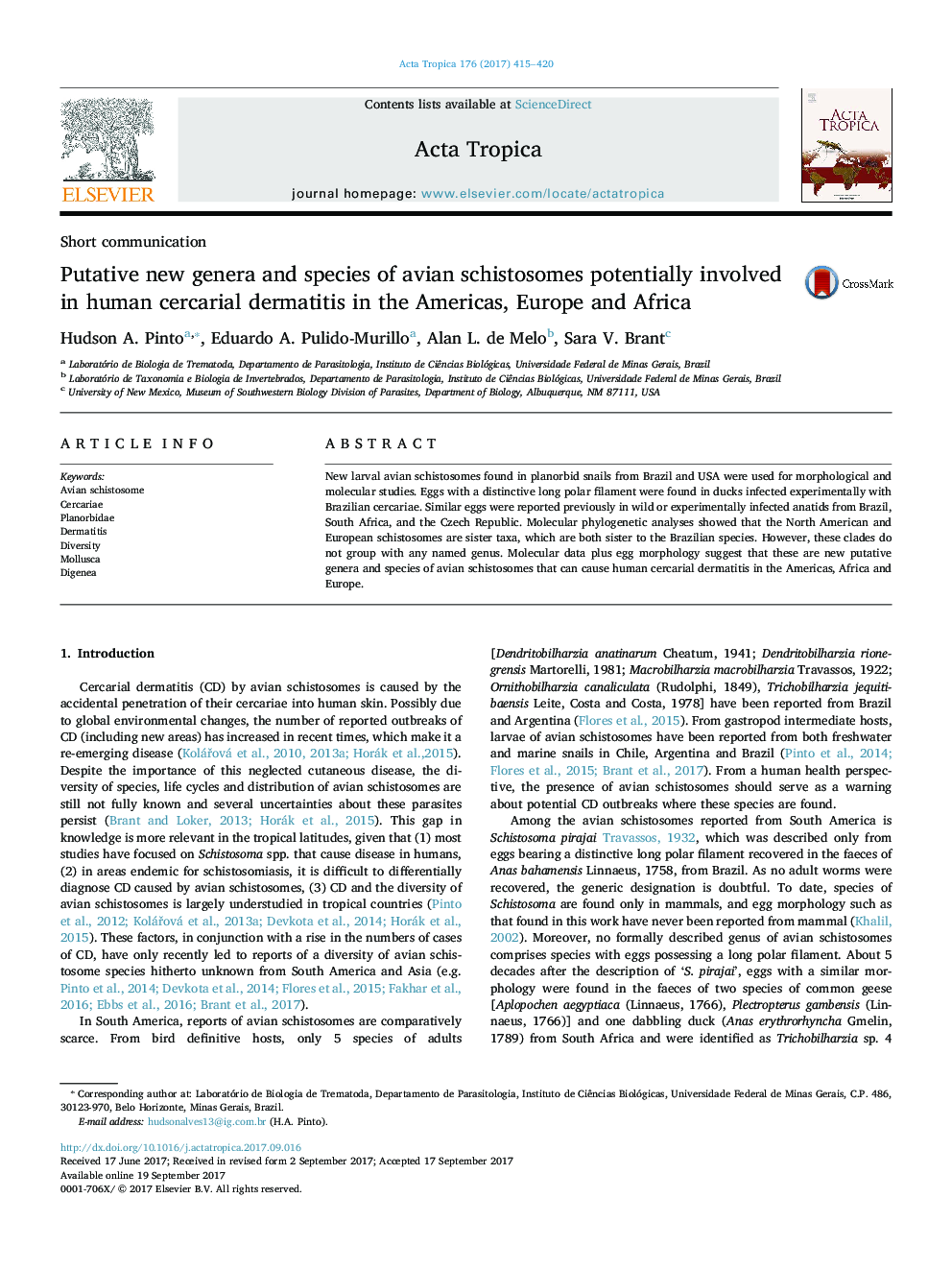| Article ID | Journal | Published Year | Pages | File Type |
|---|---|---|---|---|
| 5671066 | Acta Tropica | 2017 | 6 Pages |
â¢Molecular phylogenetic data revealed putative new genera of avian schistosomes.â¢Planorbid snails transmit putative new avian schistosomes in Brazil and USA.â¢Eggs of these schistosomes have a distinctive long polar filament.â¢The undescribed schistosomes are widely distributed (Americas, Africa and Europe).
New larval avian schistosomes found in planorbid snails from Brazil and USA were used for morphological and molecular studies. Eggs with a distinctive long polar filament were found in ducks infected experimentally with Brazilian cercariae. Similar eggs were reported previously in wild or experimentally infected anatids from Brazil, South Africa, and the Czech Republic. Molecular phylogenetic analyses showed that the North American and European schistosomes are sister taxa, which are both sister to the Brazilian species. However, these clades do not group with any named genus. Molecular data plus egg morphology suggest that these are new putative genera and species of avian schistosomes that can cause human cercarial dermatitis in the Americas, Africa and Europe.
Graphical abstractDownload high-res image (211KB)Download full-size image
